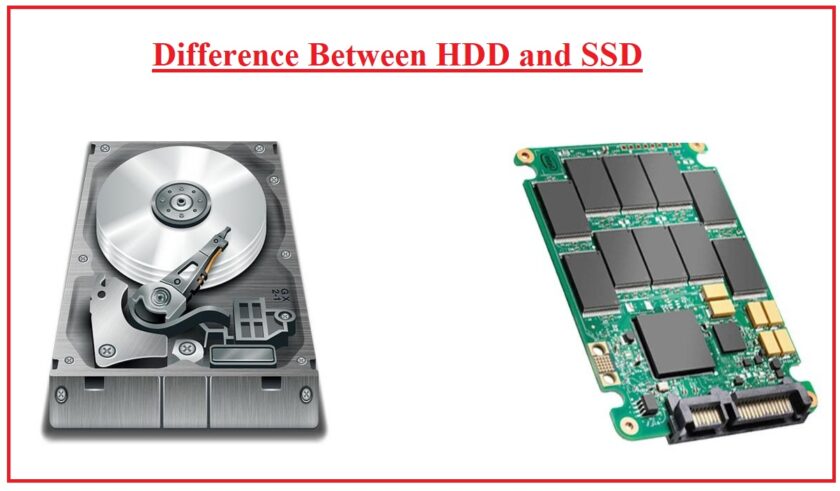Big Data Analytics is the process of examining large, diverse datasets (commonly referred to as “big data”) to uncover hidden patterns, correlations, trends, and insights. These datasets can be structured (like databases) or unstructured (such as social media feeds, emails, or sensor data), and analyzing them helps organizations make more informed decisions.
Big data analytics is increasingly critical across industries, allowing businesses, governments, and institutions to derive value from the vast amount of information they generate.
Here’s a comprehensive look at big data analytics, its benefits, applications, challenges, and future potential:
1. Key Characteristics of Big Data
Big data is commonly described by the “4 V’s”:
- Volume: Refers to the massive amounts of data generated every second from various sources like social media, e-commerce, sensors, and more.
- Variety: Big data comes in many formats: structured data (databases), semi-structured data (JSON, XML), and unstructured data (emails, videos, images, social media).
- Velocity: Data is generated and processed at unprecedented speeds, enabling real-time analysis.
- Veracity: Data quality and accuracy can vary greatly, necessitating data cleaning and verification.
2. Benefits of Big Data Analytics
- Informed Decision-Making:
- Big data analytics provides organizations with actionable insights, enabling them to make data-driven decisions that are more accurate and impactful.
- Example: Retailers use data to predict shopping trends and tailor their marketing strategies.
- Improved Operational Efficiency:
- By analyzing patterns in operational data, companies can streamline processes, optimize supply chains, and reduce inefficiencies.
- Example: Logistics companies analyze traffic data to find the most efficient delivery routes, reducing fuel costs.
- Enhanced Customer Experience:
- Big data helps businesses understand customer preferences and behaviors, enabling personalized experiences and targeted marketing.
- Example: E-commerce platforms recommend products based on past purchases and browsing history.
- Risk Management and Fraud Detection:
- By analyzing historical and real-time data, companies can identify potential risks and fraudulent activities before they cause significant damage.
- Example: Financial institutions use big data to detect unusual transaction patterns that may indicate fraud.
- Product and Service Innovation:
- Analyzing customer feedback, market trends, and emerging technologies enables companies to innovate new products and services.
- Example: Netflix uses big data to understand viewer preferences and create original content tailored to its audience.
- Predictive Maintenance:
- In manufacturing and other industries, big data analytics helps predict equipment failures before they occur, reducing downtime and maintenance costs.
- Example: Sensors on machinery collect data on performance and wear, predicting when repairs will be needed.
3. Types of Big Data Analytics
- Descriptive Analytics:
- Descriptive analytics summarizes past data to understand what has happened in the past. It involves techniques like data aggregation and data mining to provide insights into historical trends.
- Example: Monthly sales reports, website traffic analysis.
- Diagnostic Analytics:
- Diagnostic analytics goes deeper into data to understand the reasons behind certain outcomes. It identifies patterns, relationships, and anomalies.
- Example: Analyzing customer churn by looking at purchasing history and service interactions.
- Predictive Analytics:
- Predictive analytics uses statistical algorithms and machine learning to forecast future outcomes based on historical data.
- Example: Predicting stock market trends or customer buying behaviors.
- Prescriptive Analytics:
- Prescriptive analytics recommends actions or strategies based on the analysis of data. It suggests the best course of action among several alternatives.
- Example: Recommending the optimal pricing strategy for a new product based on demand forecasts.
4. Big Data Analytics Tools and Technologies
- Hadoop: An open-source framework that allows for the distributed storage and processing of large datasets across clusters of computers.
- Spark: A fast and general-purpose cluster computing system that provides in-memory processing, which is faster than Hadoop for some workloads.
- NoSQL Databases: Databases like MongoDB and Cassandra are designed to handle large volumes of unstructured or semi-structured data.
- Data Visualization Tools: Platforms like Tableau and Power BI that turn complex data into interactive visualizations and dashboards for easier interpretation.
- Machine Learning and AI: Techniques like supervised and unsupervised learning help analyze large datasets to uncover hidden insights and patterns.
- Data Lakes: A centralized repository that allows you to store all your structured and unstructured data at any scale.
5. Key Applications of Big Data Analytics
a) Healthcare
- Predictive Healthcare: By analyzing patient data, such as medical records and real-time health data from wearables, doctors can predict health outcomes and personalize treatments.
- Example: Predicting disease outbreaks or early detection of cancer through genetic data.
- Operational Efficiency: Hospitals use big data to optimize staffing, improve patient care workflows, and manage resources like equipment and medication more efficiently.
- Example: Predicting patient admission rates and adjusting staffing levels accordingly.
b) Retail and E-Commerce
- Personalized Marketing: Retailers analyze browsing habits, purchase history, and demographic data to offer personalized recommendations to customers.
- Example: Amazon’s recommendation engine that suggests products based on a customer’s past interactions.
- Supply Chain Optimization: Retailers use big data to forecast demand, optimize inventory levels, and ensure timely restocking of products.
- Example: Analyzing sales data to predict which products will be in high demand during certain seasons.
c) Financial Services
- Fraud Detection: Financial institutions use big data to identify unusual transaction patterns that may indicate fraud.
- Example: Real-time monitoring of credit card transactions to flag fraudulent activities.
- Risk Management: Banks and investment firms analyze market data, credit scores, and economic trends to assess risks and manage investments.
- Example: Predicting potential loan defaults by analyzing borrowers’ financial history.
d) Manufacturing
- Predictive Maintenance: By analyzing machine performance data, manufacturers can predict when equipment will fail and schedule maintenance proactively.
- Example: Reducing downtime by predicting when factory machinery needs repairs.
- Product Quality Improvement: Analyzing production data helps manufacturers identify issues in the production process that affect product quality.
- Example: Identifying defects in products before they leave the factory floor.
e) Smart Cities and IoT
- Traffic Management: Cities use big data from sensors, GPS devices, and cameras to monitor
traffic flow and optimize it in real-time, reducing congestion and improving overall mobility.
- Example: Smart traffic lights that adjust their timing based on current traffic conditions, easing congestion during rush hours.
- Energy Efficiency: Smart grids analyze energy usage data from homes and businesses, allowing utility companies to optimize power distribution and predict demand.
- Example: Identifying patterns in energy consumption to reduce wastage and ensure efficient power distribution.
f) Telecommunications
- Customer Retention: Telecom companies analyze call data, customer complaints, and service usage patterns to identify potential churn and take preventive actions.
- Example: Offering special discounts or services to customers showing signs of switching providers.
- Network Optimization: Telecom providers use big data to monitor network performance, predict failures, and optimize bandwidth allocation.
- Example: Automatically reallocating network bandwidth to handle high-demand areas in real-time.
6. Challenges of Big Data Analytics
- Data Privacy and Security: Managing large volumes of sensitive data raises significant privacy and security concerns, especially in industries like healthcare and finance.
- Solution: Implementing strong encryption, data anonymization techniques, and strict compliance with regulations such as GDPR and HIPAA.
- Data Quality: The sheer volume of data can include incorrect, incomplete, or irrelevant information, which can lead to inaccurate insights.
- Solution: Data cleaning and validation processes, as well as employing machine learning algorithms to filter out low-quality data.
- Storage and Processing: Storing and processing massive datasets requires significant infrastructure, especially as data continues to grow at exponential rates.
- Solution: Cloud-based big data platforms (like AWS, Google Cloud) that offer scalable storage and processing capabilities.
- Skill Shortage: The demand for data scientists and analysts who can work with big data far exceeds the available supply, creating a skills gap.
- Solution: Investment in training and education to build a workforce proficient in data science and analytics.
7. Future of Big Data Analytics
- Artificial Intelligence Integration: AI-powered analytics will enhance the ability to process and interpret big data, allowing organizations to derive even deeper insights from complex datasets.
- Example: AI algorithms can automate data analysis processes, providing more predictive and prescriptive insights.
- Edge Analytics: With the rise of IoT devices, processing data closer to where it is generated (edge computing) will reduce latency and bandwidth usage, making real-time analytics more efficient.
- Example: Analyzing data from sensors in industrial equipment on-site to prevent breakdowns before they occur.
- Increased Automation: Automation in big data analytics will reduce manual efforts in data preparation, cleaning, and analysis, allowing businesses to focus on actionable insights.
- Example: AI-powered tools that automatically suggest data correlations and generate reports based on real-time analysis.
- Blockchain and Data Security: Blockchain technology can be used to secure big data by providing a transparent and tamper-proof way to store and manage data, especially in sectors like finance and healthcare.
- Example: Securely storing healthcare records or financial transactions on a decentralized ledger.
- Data Democratization: Tools that make big data analytics accessible to non-technical users will become more common, enabling employees across all departments to leverage data insights in decision-making.
- Example: Self-service analytics platforms that allow users to query datasets and create visualizations without needing to write code.
Conclusion
Big Data Analytics has transformed how organizations operate by turning raw data into actionable insights that drive decision-making, innovation, and efficiency. As technology continues to evolve, big data will become even more integral to solving complex problems across industries, improving customer experiences, optimizing operations, and predicting future trends. However, businesses must also address challenges like data privacy, security, and the shortage of skilled professionals to fully harness the power of big data.






